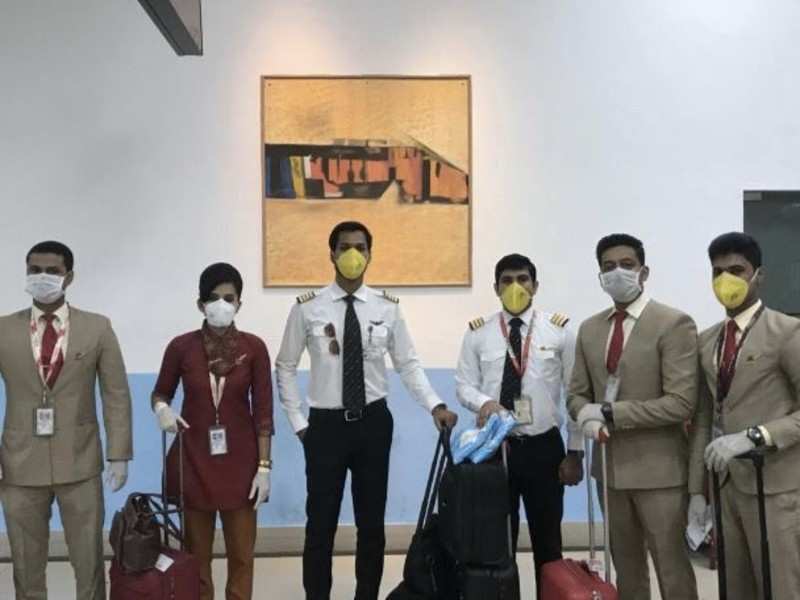The job market halted its pandemic-induced collapse in May as employers brought back millions of workers and the unemployment rate unexpectedly declined.
Tens of millions remain out of work, and the unemployment rate, which fell to 13.3 percent from 14.7 percent in April, remains higher than in any previous postwar recession.
But employers added 2.5 million jobs in May, the Labor Department said Friday, defying economists’ expectations of further losses and offering hope that the rebound from the pandemic-induced economic crisis could be faster than forecast.
Major stock indexes surged on the news, and President Trump hailed the report in a series of tweets on Friday morning.
Still, economists warn that it will take far longer for the economy to climb out of the hole than it did to fall into it. Job openings have begun to rise but remain far below normal levels. Millions more people have been laid off in the weeks since the data released Friday was collected in mid-May. And the trillions of dollars in government assistance that have helped keep the economy on life support may be nearing their end.
“We might have climbed one rung of the ladder out of the hole, but it’s still a long ladder,” said Ian Shepherdson, chief economist of Pantheon Economics.
The Labor Department cautioned that data-collection issues that have plagued the agency throughout the crisis continued last month. Some temporarily jobless workers were characterized as “employed” in May; had they been counted correctly, the department said, the unemployment rate would have topped 16 percent.
Even if they didn’t anticipate the May rebound, many economists had expected that unemployment would begin to ease as states reopened and businesses called employees back to work.
More than half of the month’s job gains — 1.4 million — were in restaurants and bars, many of which received assistance under the government’s Paycheck Protection Program. Friday’s report suggests that program, along with other elements of the government’s response, helped offset at least some of the economic damage caused by the shutdown, which should allow for a faster rebound.
“The economy is still being very much buffered by stimulus,” said Michelle Meyer, head of U.S. economics at Bank of America. “When that starts to wane we will learn a lot more about the underlying health of the recovery.”
[How do you feel about going back to work? Share your story.]
At Beef ‘O’ Brady’s, a Florida-based chain of more than 150 sports bars, business was down 62 percent in April, when its dining rooms were closed nationwide and its only business came from takeout. But only a handful of the chain’s restaurants have closed permanently, in part because nearly all of its franchisees received Paycheck Protection loans.
“The damage would have been much greater without PPP, I can tell you that,” said Chris Elliott, the chief executive.
Now business has begun to pick up as states gradually allow restaurants to reopen. In the last week of May, sales were down about 15 percent, Mr. Elliott said, and customers appear eager to eat out again.
Still, the longer-run outlook is uncertain. If business stays at its current level, many franchisees will struggle to eke out a profit, he said, and at half the locations, sales are still down more than 50 percent. That won’t be sustainable for long.
“There are going to be franchise owners that if they can’t reach 15 percent, or it doesn’t improve incrementally over time, they’re going to get fatigued, and I think some of them are at risk of just throwing in the towel,” Mr. Elliott said.
Job growth in May was concentrated in sectors hit hardest in the early stages of the crisis, such as leisure and hospitality and retail. But manufacturing, health care and professional services all added jobs as well — another good sign for the recovery because it suggests that the damage has not spread as deeply into the economy as many feared.
Still, employment in nearly every sector remains far below where it was before the crisis began. Many economists expect an initial rebound in at least some kinds of business. But it isn’t clear how strong that surge will be, or what will come after.
“It’s the jump and then the crawl, and the question is how high is the jump and then how long does the crawl take,” said Nick Bunker, who leads North American economic research at the Indeed Hiring Lab.
Friday’s report sent mixed messages on those questions. The number of workers reporting that they were on a temporary layoff or furlough fell by 2.7 million, a sign that employers are calling back workers. But the number of people reporting they had lost their jobs permanently rose, by about 100,000.
“That is a concerning sign for the length of the recovery because every layoff that turns permanent makes a full recovery harder,” said Daniel Zhao, senior economist at the career site Glassdoor. “The surprise to me in this report is that the recovery was earlier than we expected. But the next question is whether it will be faster than we expected.”
When Mike Lowe flew to Florida in early March to visit his mother, he had a successful freelance business doing web and graphic design, and a part-time gig in dog day care. A week later, he arrived home in Portland, Ore., to a text message from the dog business telling him not to go into work. He was let go entirely within days, even as his freelance clients began calling to cancel orders.
Two and a half months later, Oregon has begun to reopen, but Mr. Lowe, 51, is treading water. One freelance project looks likely to resume soon, but another client, a local bar, told him this week that it would shut down permanently — its business relied on live music, which seems unlikely to come back anytime soon. The owner of the dog day care says she hopes to bring him back at reduced hours but isn’t sure when business will rebound sufficiently to make that possible.
“I’d say I’m just in wait-and-see mode at the moment,” he said.
Like many laid-off workers, Mr. Lowe is able to get by largely because of the $600 a week in extra unemployment pay that Congress approved as part of its emergency funding bill in March. But that benefit is set to run out at the end of July, and it is far from clear that Congress will extend it. Economists warn that pulling away support too early could stall the recovery.
“Right now, the government is plugging a good deal of that hole for households, but how long will that last, we don’t know,” said Ellen Zentner, chief U.S. economist for Morgan Stanley. She noted that the unemployment rate will almost certainly still be elevated in August, adding, “It’s a very tough time to pull support away from households when the unemployment rate is still that high.”
Even now, as some businesses start to bring back workers, layoffs are continuing. Nearly two million workers filed first-time claims for state unemployment benefits last week, more than double the worst week of any previous recession. State and local governments cut nearly half a million jobs in May, and millions more such layoffs are likely in coming months in response to plunging tax revenues.
In Jackson, Mich., a small city about 70 miles west of Detroit, the school board voted last week to cut more than 40 positions in response to a multimillion-dollar budget shortfall. Jeff Beal, the district’s superintendent, said he worried about the impact the cuts would have on education and on the local economy. But he said the district had little choice.
Among the cuts: the assistant superintendent for human resources, which means Mr. Beal will have to inform laid-off workers himself.
“Now that that position has been eliminated, that responsibility falls to me,” he said. “I’m going to have to make a lot of very personal, very painful phone calls this week.”
Source link


